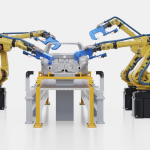Nescafé has outpaced its 2025 sustainable sourcing goal a full year early, signaling stronger-than-expected momentum toward regenerative agriculture adoption. But beyond the numbers lies a strategic recalibration of how upstream investment is redefining supplier viability, cost control, and continuity under climate stress.
From Compliance to Commercial Risk Strategy
Nescafé sourced 32% of its coffee in 2024 from farmers practicing regenerative agriculture—well ahead of its 20% target for 2025. On the surface, it’s a sustainability achievement. In practice, it signals a deeper strategic recalibration: one that reframes regeneration as a response to escalating supply disruption and price instability.
Over the past year, extreme weather hammered yields across key coffee-producing regions, helping drive arabica and robusta prices to multi-decade highs. Nescafé’s answer? Not just traceability, but hands-on investment in supplier productivity. More than 200,000 farmers across 16 countries were trained in regenerative techniques, from composting and mulching to optimized fertilization and erosion control. The program also distributed 21 million new coffee plantlets to combat aging trees, which are increasingly vulnerable to climate impacts and productivity loss.
These interventions are designed not just to restore soil, but to stabilize sourcing and reduce per-unit emissions. Life cycle models from Terrascope show that 75–91% of coffee’s carbon footprint originates at the farm level. Nescafé reported a 20–40% reduction in emissions per kilogram of green coffee in 2024 alone.
Yield Forecasting and Farmer Economics
Nescafé’s sourcing strategy doesn’t stop at agronomy. Through its partnership with GIZ, the brand is training farmers on business acumen and financial decision-making under the Farmer Business School model. This includes guidance on input use, investment planning, and diversification, all aimed at creating more predictable, commercially resilient suppliers.
A study by TechnoServe, also cited in the progress report, suggests that an annual $500–600 million investment in regenerative coffee practices could yield up to $2.6 billion in additional exports, $2 billion in farmer income, and cut 3.5 million metric tons of CO₂e annually. That’s a compelling cost-to-impact ratio—particularly for procurement teams under pressure to balance ESG mandates with margin protection.
The Nescafé Plan now spans 400,000 hectares and is being deployed as an integrated sourcing framework combining environmental, social, and commercial governance. Responsible sourcing coverage hit 93% in 2024, with full traceability in sight for 2025.
Build the Supply, Don’t Just Source It
For buyers in volatile commodities, Nescafé’s approach offers a clear takeaway: future-fit supply chains will require funding the transition at source, not just auditing it. The brand’s early milestone is less about hitting a regenerative target and more about de-risking future cost and availability through supplier enablement.
As regenerative models gain traction in cocoa, palm, and beef, companies must decide whether they want to influence production systems or inherit their failures. Nescafé’s bet is that the greatest resilience comes not from reshuffling suppliers, but from transforming them.





